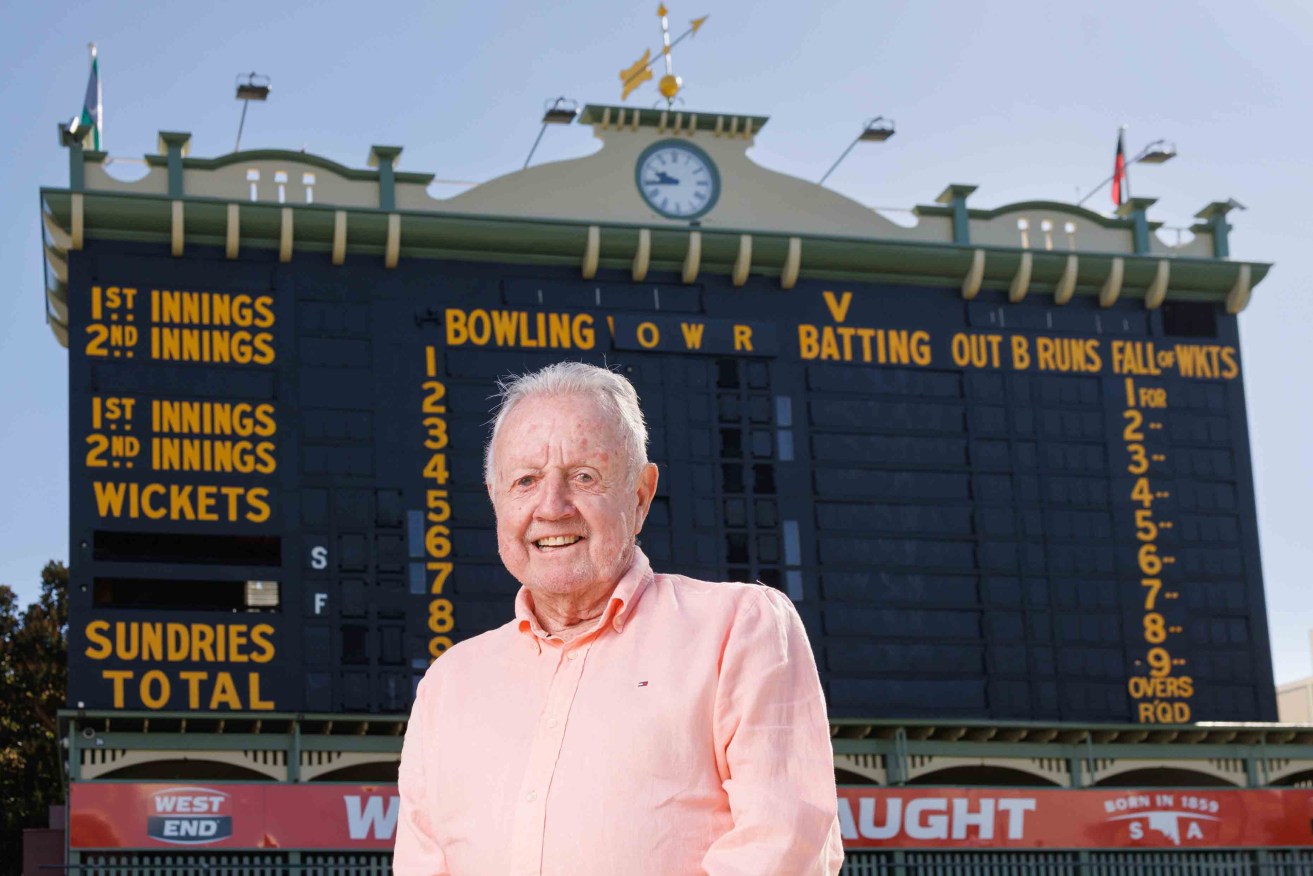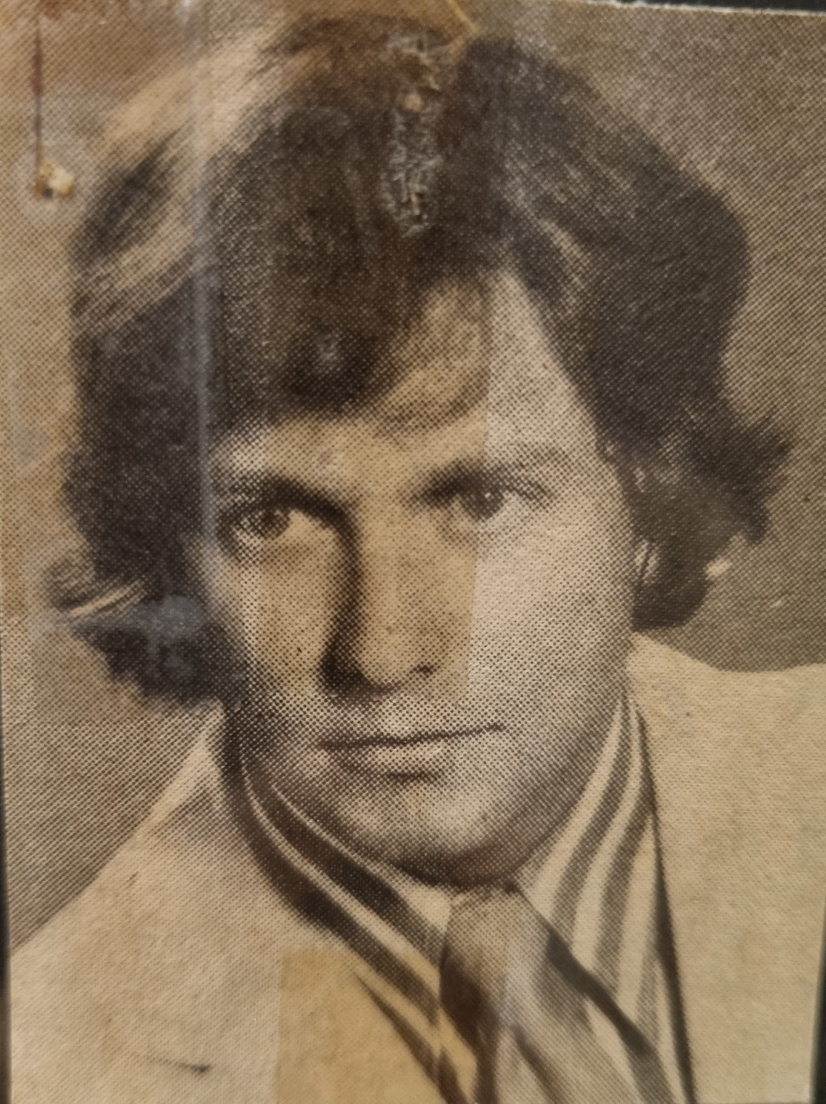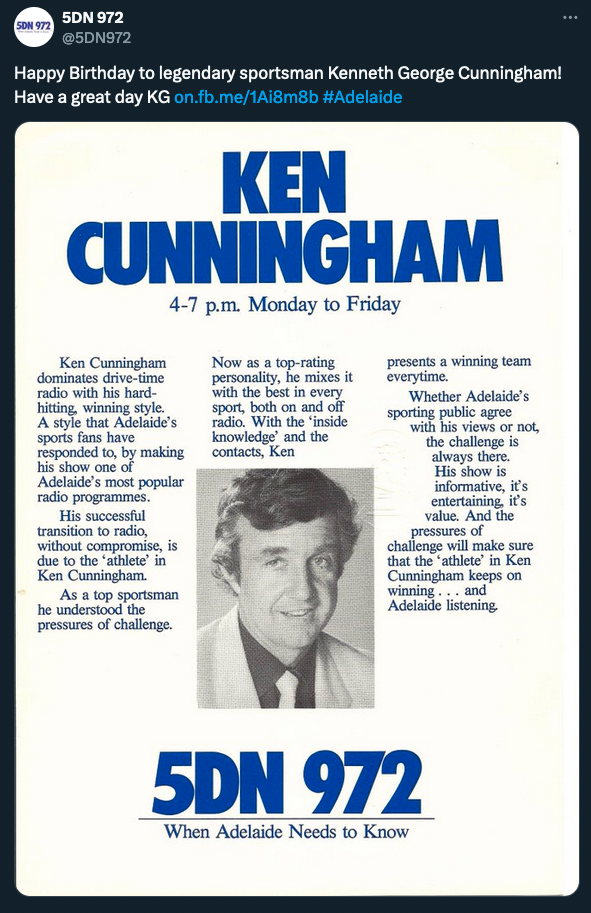Adelaide’s central role in the rise of sports radio – the full story
Ken”KG” Cunningham’s rise to stardom in talk radio – and consequent induction to the SA Sport Hall of Fame on March 1 – has a stunning back story that finally can be told in full for the first time.


KG Cunningham's pioneering role in sports radio had its origins in a young radio manager's sharp eye on the US market. Photo: Tony Lewis/InDaily
“KG” – Kenneth George Cunningham – was not the first choice for the groundbreaking sports talk radio show that from 1977 changed the Australian media and sporting landscape forever. He was not even the second.
“Ken’s name was not even on the list,” says veteran Adelaide radio master Marty Smith, who for the first time has revealed the full genesis of the moment that took Cunningham from the cricket and footy fields to grand stardom on the radio dial for more than five decades.
“I had two other names… I won’t tell you who they were: they are both dead now,” adds Smith of his chase for a frontman to a new concept in Australian radio – sports talk. “Both of them said no.”
Earlier this month, Cunningham was inducted into the SA Sport Hall of Fame, not just in recognition of his first-class cricket career in which he won three Sheffield Shield titles while batting with legends such as Barry Richards and Sir Garfield Sobers, and his outstanding umpiring in league football. His true mark on sport is his longstanding championing of South Australian sport behind the microphones of radio stations 5DN, FIVEaa and Triple M.
But the true story behind the start of sports talk radio in Australia – with KG as the pioneer – is very different from the tale Cunningham has known since it all began with a life-changing decision in 1977.
Today, Smith can put on the record with InDaily the full story that dates to 1969; eight years before KG was faced with the decision to either captain the South Australian State cricket team while Ian Chappell led a defection to World Series Cricket or take a risk as a pioneer on radio.
Cunningham has long thought – and has repeatedly told the story – that his lucky break after years of short-lived jobs between cricket seasons was the masterstroke of then 5DN boss Paul Linkson, with Cunningham believing it was Linkson who made a study tour of the USA in 1977 to discover sports talk radio.
“It starts in 1969,” says Smith of his nine-month tour of the world while on study leave from another Adelaide radio station, 5AD.
“I spent the last six weeks in the US and heard a lot of radio. The one thing they did then was lead-in shows to their baseball and football – talk shows that were entertaining.

A young Marty Smith. Image courtesy Marty Smith
“I came back to 5AD… top-40 music and no room for sport talk. So I sat on the idea.”
Return trips to the US, particularly in 1974, “convinced me that we could make this work in Adelaide,” adds Smith, who moved to 5DN in 1972.
“We needed to be local, parochial and with the right person behind the microphone.”
And Smith needed to be at a radio station prepared to gamble with a new format.
This chance came in 1975 when Linkson appointed Smith as program manager at 5DN with the challenge to “bring the station into the 20th century”. The key first step was hiring Jeremy Cordeaux from Sydney station 2GB in August 1976.
“Paul knew nothing about sport… and that was good for me,” says Smith, who at 16 had become Australia’s youngest radio announcer. “It gave me a chance (to add sports talk to programming at 5DN).”
While Linkson had no interest in sport and no burning eagerness to try sports talk, Smith planted the first seed at Christmas 1975 when he paired veteran race caller Ray Fewings and the new kid on the block, Bruce McAvaney, in a two-week run from 11-12 each day.
“It was the first time we put on a sports show that was based on talking about sport as entertainment… and it was a success,” Smith said.
“Every two or three months I would raise (the concept of a sports show) again. In his loud, booming voice, Paul would reply, ‘No, Mr Smith, you can’t do it. It is too risky’.”
In 1977, on return from another trip to the US, Smith insisted.
“This time I meant it… we had to do it; the time was right,” Smith said. “I went to a couple of guys, they both said ‘no’, and I thought, ‘Well, I have tried’.”
The man who revived Smith’s vision was 5DN producer, the sports-minded Guy Dunstan, who recommended Cunningham.
Smith was far from convinced.
“I knew KG from the Channel Nine Footy Show. He was horrible: he was part of that loud, arrogant gang that was out of control on weekend television.”
Dunstan insisted for two weeks that “we needed to talk to KG”.
“I went to the Newmarket Hotel where KG was working with Noel Teasdale, not knowing he had been offered the captaincy of the SA cricket team,” said Smith. “I told him I was looking for someone to turn radio on its head. KG said, ‘That’s not me … I’m busy’,” Smith says.
“I left him with the thought we should talk and he at least agreed to that.
“I returned to 5DN to tell Linkson that KG was prepared to meet us, but I did not know how fragile it was (because of Cunningham’s eagerness to follow Chappell as SA cricket captain).
“I did call KG saying Paul Linkson wanted to meet him – as soon as possible. A day or two later we did meet. Both Ken and Paul were asking ‘What is going on here?’ while Guy and I were doing a lot of questioning. The tone was, ‘Why does Marty Smith want to ruin this radio station?’
“By the end, KG had settled into the idea we had… but he did not say yes nor did he say no. When he did get back to us saying he would do it, I was thrilled.
“I could see the potential. We had seen the soft side of KG. He was genuine. He was so loveable. And he was a Trojan who would come in at 8am for a 4pm show. We had the right guy, even though Paul Linkson was extremely nervous and I am sure he was hoping the answer from Ken was a no.
“All we needed was Ken to be the real KG, not the one from Channel Nine. We even had to stop Nine from sending Ken to elocution lessons. I told Nine they would ruin him. We had to keep the loveable KG with all the bad grammar and the loose talk.”

A promo for Cunningham’s 5DN show, posted by a 5DN nostalgia account on Twitter.
It started as a half-hour show on Tuesdays and Thursdays from 5.30-6. It ultimately became the 4-7 drive show every weeknight with phenomenal ratings.
“We couldn’t throw Ken in the deep end from the beginning,” Smith recalls. “We took cautious steps, otherwise Paul Linkson would have had a heart attack. We built a good, happy program. KG was enjoying it. He loved talking to kids and women and people were lining up to talk to him on the radio.”
Smith left 5DN in 1980.
“I told KG, you only have seven years in this business – make the most of it,” Smith said.
Seven years after he left 5DN, Smith was again chasing KG for a record-breaking deal that would have taken him to 5KA in partnership with Channel Nine.
When Smith expected Cunningham to sign the lucrative contracts that would have rewritten records for salaries on Adelaide radio and defect from 5DN, KG stayed put, and neither man has spoken to each other since.
KG’s ultimate exit from 5DN to FIVEaa was sealed with 5DN changing format from talk to music at the start of the 1990s.
At FIVEaa with state cricketer David Hookes and later inaugural Crows coach Graham Cornes, KG continued to be Australia’s most successful sports talk announcer, and prime advocate for all South Australian sporting campaigns, as recognised now by the SA Sport Hall of Fame.




